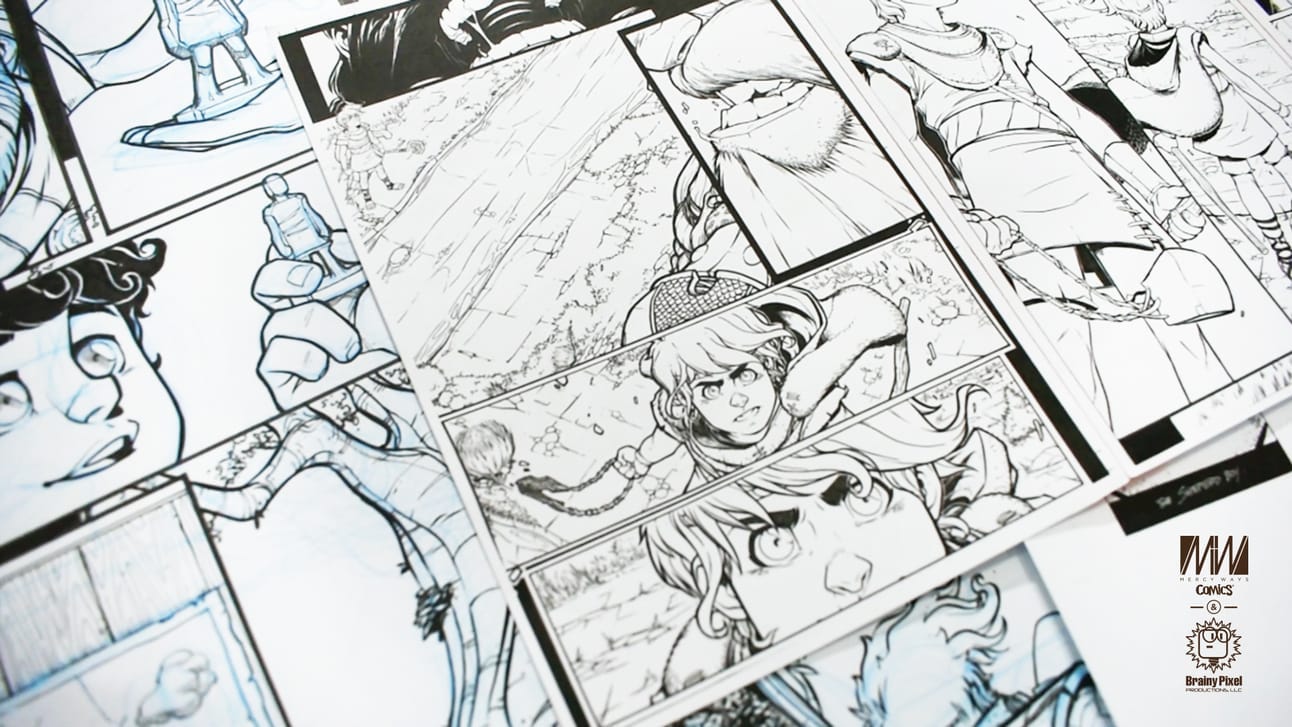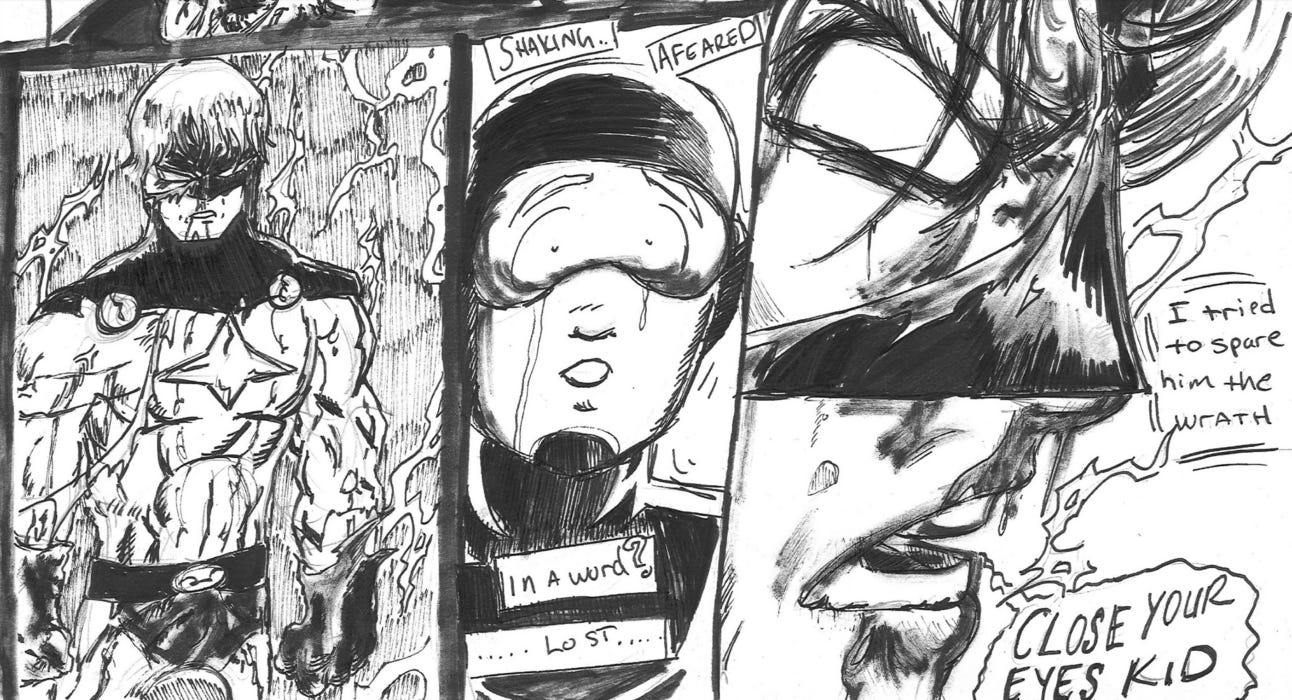Animation Is The Greatest Medium For Storytelling.
4 Key Reasons Using Animation Will Elevate Your Christian Storytelling

Welcome back to the Christian Story Lab. Last week, the $349 billion gaming industry taught you how to use the same strategies to gamify your writing. Addicted was the word used.
Today, we’re building on that foundation through the art (and science) of visual storytelling. There are about 170,000 words in the English language. How limiting!
What if there was a way to transcend cultural, linguistic, and even imaginative barriers in our storytelling? THAT is the power of visual storytelling and we are going to the best version of it to learn: animation.
This is Peter Sohn, but friends call him Peter.

Director Peter Sohn, the creative force behind Pixar's newest film Elemental, has a story that perfectly illustrates the power of animation. Growing up as a Korean immigrant in New York City, Sohn experienced a pivotal moment that shaped his journey toward animation.
He recalls watching the original Dumbo in theaters with his mother, who didn't speak English. Halfway through the film, Sohn had an epiphany: his mother hadn't once asked for a translation. The animation itself was doing all the heavy lifting, conveying every ounce of emotion, tension, and resolution without a single word spoken.
This changed everything for Sohn and should change everything for us. In ways that the words alone cannot, animation can communicate complex ideas and emotions in relatable ways.
Animation studio BibleProject understands this perfectly and has become a master at using dynamic animation to teach biblical principles and their application. They have covered topics like justice, generosity, character of God, and holiness. Abstract ideas made incredibly practical through animation.
So, how does animation help my storytelling?
Great question.
I’ve found 4 key reasons all writers should pay attention to animation storytelling.
1) Animation lets our imagination off the leash.
Animation allows the imagination to run wild, chase squirrels, and lift its leg to every bush and hydrant.
Gritty realism or symbolic abstraction? Drama, pathos, or humor? Animation is limitless in its approach to a story. True creativity runs free, which matches our God's design.
God's creativity knows no bounds.
God created the sweet peach, sour lemon, and spicy habanero.
God gave us soft kittens, prickly porcupines, bumpy toads, thick green jungles, and glacier fields.
God created variety in the minute snowflake, the towering trees, ever-changing clouds, and shifting weather.
Animation is a powerful reminder to think beyond the literal in our storytelling. Whether you're writing a speech, setting a scene for the stage, or spinning a bedtime story for your little ones, don't shy away from letting your imagination off the leash.
2) Animation tickles the eye.
We are the most visual generation, which will only increase and enhance over time. The good news is that good storytelling, coupled with killer animation, takes messaging to a new level.
My friend, Intellectric on X, captures it perfectly, "Animation can present concepts and intangible things that can't be visualized with video or photography and show change over time in ways which static illustrations cannot."
The following is a scene from one of his projects Bearly Biblical: An animated kid’s show where teddy bears retell epic bible stories with all the violence of the source material, but it’s ok because they are teddy bears.
Do you feel the tickling? Even if you're not an artist, thinking in visual terms can sweeten your storytelling.
Here are some practical ways to incorporate tickling in your writing.
Use vivid descriptors: Instead of saying, "The disciple was afraid," try "Peter's hands trembled as he gripped the side of the boat, his wide eyes fixed on the stormy waves."
Show change over time: Describe Paul's journey from persecutor to apostle with visual cues: from eyes blazing with anger to eyes shining with divine purpose.
Simplify complex concepts: Explain the Trinity using the three states of water: solid (ice), liquid (water), and gas (steam). Or the sun: the sun itself (object), the light it gives (feature), and the heat we feel (benefit).
Create memorable characters: Give your characters relatable traits or mannerisms that readers can easily picture.
Storyboard your narratives: Before writing, try sketching out key scenes. This can help you visualize the flow of your story and identify powerful visual moments to highlight in your writing.
3) Animation Can Put the Audience in the Driver's Seat.
We've chatted before about how video games give players a sense of ownership in the story. It's what makes gaming special, but hey, why should games have all the fun?
As storytellers, we've got some catching up to do when it comes to audience engagement. Have you noticed how comedians are riffing more with their audience these days? Or how did LitRPGs like Dungeon Crawler Carl have a moment in the spotlight?
It's all about making the audience feel part of the action.
Any good story should be so relatable that readers can slip into the main character's shoes without tripping. So ditch those tired old literary stereotypes—evil stepmothers, nerdy outcasts, and noble savages are about as relatable as a pet rock.
Instead, aim for characters your audience can really connect with.
Sarah, the overworked single mom who's trying to balance her kids' soccer practice with her own dreams of going back to school.
Mike, the middle-aged guy who's just lost his job and is now grappling with a career change and an intertubed shaped gut.
These characters aren't superheroes or chosen ones – they're everyday folks facing everyday challenges. That's what makes them relatable.

Brainy Pixel, Chronicles of Faith
When we create characters like these, we're essentially handing the keys over to our audience, letting them slide right into the driver's seat of our stories.
Remember, the goal isn't just to tell a story – it's to create an experience that your audience can step into. Whether writing a short story, shaping a sermon, or even putting together a church newsletter, think about how you can make your audience feel like active participants rather than passive observers.
4) Animators are a different breed of human.
Since launching the Christian Story Lab, I’ve had the privilege of meeting some of the best animators in the business. If you’re an animator or visual artist and want to connect, find me on X (@thepaytonminz).
Animators and artists have a unique passion for their craft, often spending countless hours hunched over sketch pads or squinting through blue light glasses at their screens.

Here’s the thing: God can use that kind of dedication to advance His Kingdom through animation. As BloodxBoughtComics on X puts it, “Holy Ghost-inspired visual art like animation is a great tool and a gift from the Lord that allows us to share a small glimpse of spiritual growth...”
Maybe adjust your posture a bit, though, friends. Nerd Neck is real.
Here’s the lesson: Approach your storytelling with the same level of dedication and attention to detail. Every word, image, and pause is an opportunity to convey God’s truth and love.
The Christian Perspective on Visual Storytelling
Christian storytellers have an amazing opportunity to use visual elements to effectively convey spiritual truths. The Bible itself is full of graphic imagery and symbolism, from the burning bush to the visions in Revelation.
My friends at Brainy Pixel summarize it perfectly:
I think animation provides the opportunity to explore spiritual truths in entirely new visual ways. Animation provides a nearly limitless canvass that can be transformed in any way our imaginations lead, and this is CRITICAL for impacting today's very visually driven and drawn audiences with out of the box gospel imaginings.
Here’s the TL;DR
Unleash Imagination: Animation makes complex theological concepts accessible by turning abstract ideas into engaging visual stories.
Create Lasting Impressions: Animation tickles the eye, creating impressions that stick with your audience long after they’ve seen them.
Put the Audience in the Driver’s Seat: Animation gives viewers a unique, interactive experience, helping them explore biblical truths more deeply.
Celebrate the Animator’s Craft: Animators are a different breed, pouring dedication into their work. God can use their creativity to advance His Kingdom.
Practical Tips for Using Visual Elements
Start Small: Even if you're not an artist, you can begin incorporating visual thinking into your storytelling process. Try sketching out your ideas or creating simple diagrams.
Collaborate: Partner with visual artists in your community to bring your stories to life (reach out, I know a few).
Learn from Others: Study how organizations like BibleProject use animation to explain complex biblical concepts.
Be Intentional: Remember, less is often more. Choose visual elements that truly enhance your message rather than distract from it.
Pray for Inspiration: Ask God to guide your creative process and show you new ways to visually represent His truths.
Last Thought, I Promise
As we continue to grow as storytellers, remember our goal is not just to entertain but to edify and glorify God through our work. Visual storytelling offers us powerful tools to do just that, allowing us to create immersive experiences and tell better stories.
This Week’s Christian Creator Highlight!
The opening 15 seconds of this video are one of the most profound examples of juxtaposition I have ever seen. The LOOR team nailed it.
This week, sketch out your ideas. This could be the mindmapping a sermon or storyboarding your next novel. Note: Stick figures are welcome here. Tim Urban made 🤑 off of them.
Writing Prompt
As always, feel free to submit your stories, illustrations, or videos by replying to this email or tagging me on X (@thepaytonminz). Let me know if you’d prefer to remain anonymous.
Write on 🤙
Payton



